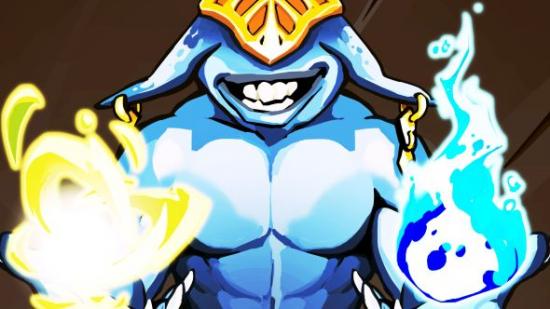Slay the Spire is not really a card game at all. Sure, it has plenty of the elements of a card game – cards being the top one, of course. It also has an energy system that is reminiscent of Hearthstone’s mana and requires you to build a deck. It even maintains the click-and-drag attack options now central to the genre. But it is not a card game – at least, not like the ones you know.
Here are some of the best card games on PC.
Slay the Spire’s most obvious deviations are its fast pace and constantly rotating deck. So, while a card in Hearthstone or Gwent is discarded after it has been played, in Slay the Spire cards are put into a discard pile that is continually shuffled back into play once you run out of cards. That means, in longer battles, your strength can come from the fact that you are able to play the same card multiple times.
The way you shape your deck runs parallel to Hearthstone’s Arena and Dungeon Run modes, but has little in common with more traditional CCG strategy. From your basic starting deck, Slay the Spire lets you add to it after every successful battle with a choice of three cards. As you work your way up the titular tower, a collection of these rewards – and any others you earn along the way – develop your deck into something capable of taking on the boss at the end of each act. You combine your deck with powerful relics that give you passive boosts, and also have the option to use potions to help you out in a jam.
Due to demanding less of your strategies and having far fewer important card choices, the mental energy that goes into playing Slay the Spire is less than in other card games. As its monsters are often able to soak up your attacks, the small amount of extra damage you can do by focusing on the optimal order to play your cards in is trivial. This is a luxury Slay the Spire can afford given that its design has no multiplayer mode to consider. I am 20 hours in and am yet to have won or lost a game based on whether I remembered to weaken an enemy before I hit it.

Slay The Spire benefits from speed rather than strategy, which in itself is based more on the decisions you make outside of combat than in the heat of it. The paths you take up the tower, the random encounters you pick, the rewards you select in stores or at the end of battles are all more strategically important than any card you might play at a given moment in battle. The ability to repeatedly use the same cards as and when they are relevant, rather than because they are the perfect choice, makes Slay The Spire feel more like turn-based strategy than traditional CCG.
This does mean that Slay The Spire lacks the complexity of its CCG counterparts. But for a few simple buffs and debuffs, the most intricate effects to play around are those that impact the number of cards you can draw at any given time. After that, many interactions simply require you to pull off some quick mental arithmetic to determine their relative usefulness. What it captures far more effectively than the complexities of a card game is the high stakes of a roguelike. As with more traditional dungeon-crawling roguelikes such as The Binding of Isaac, Slay The Spire makes me feel as though I have missed an opportunity if I lose from a good position, and makes me want to boot up another run when I fail. It drives a constant desire to progress, rather than simply win, which isn’t present in any other CCG I have played.

Slay The Spire actually reminds me more of Pokémon than Hearthstone. Rather than putting together a winning strategy over several turns, you play what is likely to be most effective in a given moment. Rather than your enemy hiding powerful cards in their hand, everything they do is signposted to give you an opportunity to respond. And instead of balancing the strengths and weaknesses of an entire board, your focus is on your enemy’s (and your own) gradually depleting health bar.
Crucially, however, the fact that the decisions you make out of battle have more impact than the cards you play is indicative of a game that is far closer to long-form strategy than its presentation would have you believe. Speaking of which, I have got to get back to it – that tower won’t climb itself.
